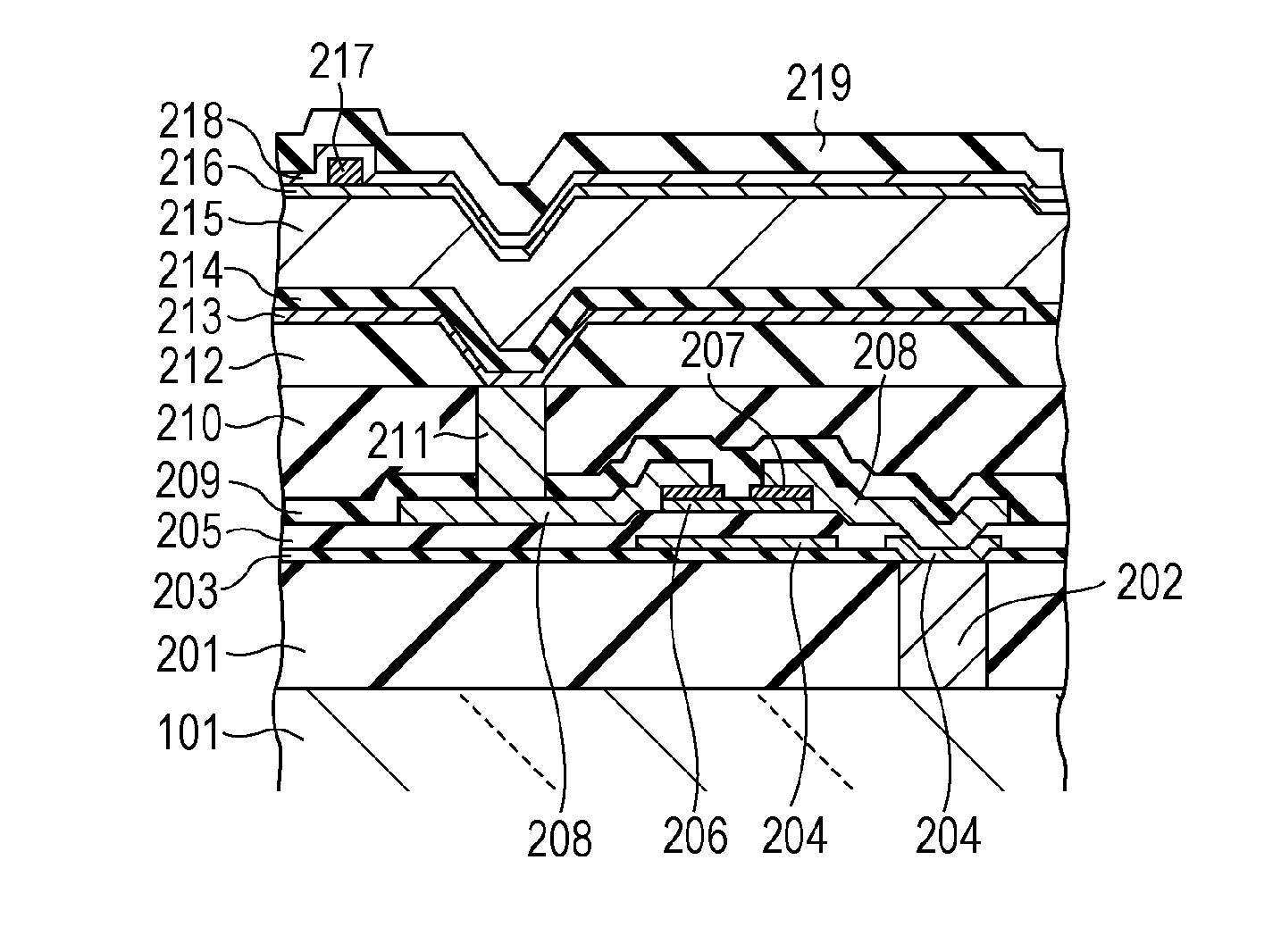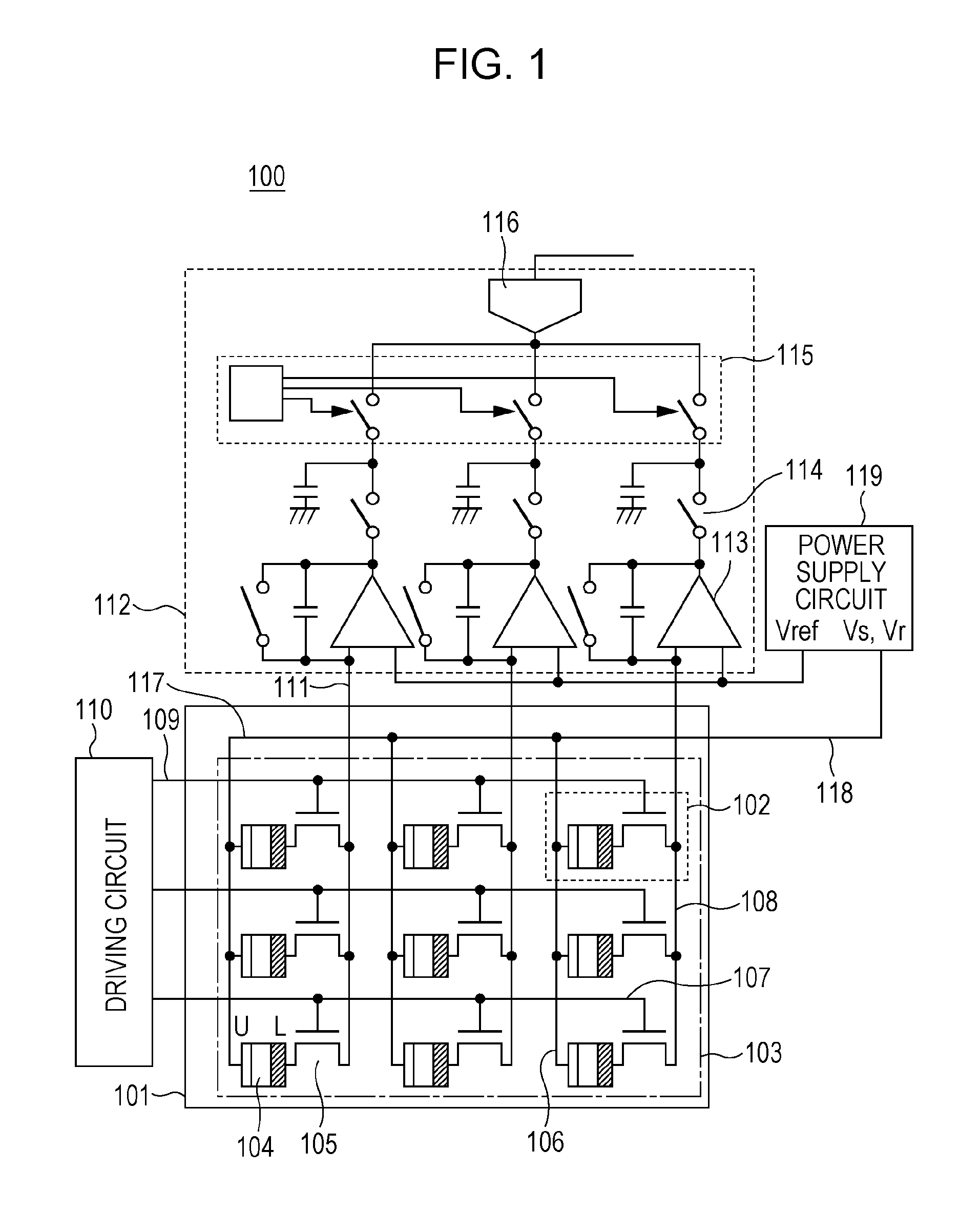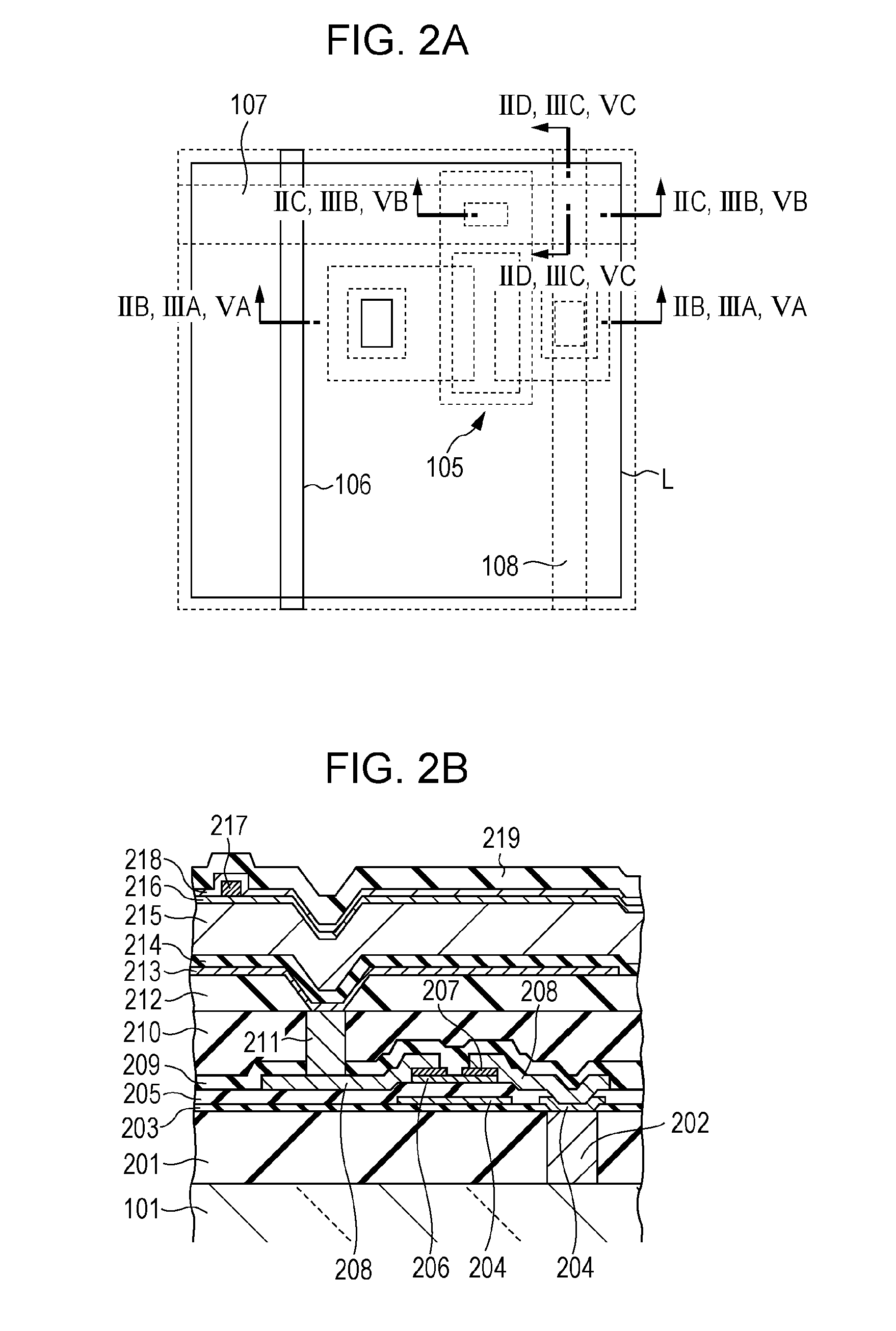Detection apparatus and radiation detection system
a detection apparatus and radiation detection technology, applied in the field of detection apparatus and radiation detection system, can solve the problems of difficult to reduce the turn-on period, difficult to reduce the design necessary period of the switch element, dull or distorted driving pulse transmitted via the driving line, etc., to reduce the capacitance of the signal line, reduce noise, and increase the driving speed
- Summary
- Abstract
- Description
- Claims
- Application Information
AI Technical Summary
Benefits of technology
Problems solved by technology
Method used
Image
Examples
first embodiment
[0023]A radiation detection apparatus according to a first embodiment is described below with reference to FIG. 1 and FIGS. 2A to 2D. A radiation detection apparatus 100 according to the first embodiment includes an insulating substrate 101 such as a glass substrate and a pixel region 103 formed on the insulating substrate 101. In the pixel region 103, a plurality of pixels 102 are arranged in a matrix having row and column directions. Each pixel 102 includes a conversion element 104 configured to convert radiation or light into an electric charge, and a switch element 105 configured to output an electric signal corresponding to the electric charge. In the present embodiment, a metal-insulator-semiconductor type (MIS-type) photoelectric conversion element is used as the conversion element, and a thin film transistor (TFT) is used as the switch element. In a case where the conversion element is designed to convert light into an electric charge, a fluorescent member is disposed on (st...
second embodiment
[0033]A second embodiment of the present invention is described below with reference to FIGS. 4A to 4D. FIG. 4A is a plan view of a pixel of a radiation detection apparatus according to the second embodiment of the present invention, and FIGS. 4B to 4D are cross-sectional views taken along lines IVB-IVB, IVC-IVC, and IVD-IVD, respectively, in FIG. 4A. The equivalent circuit and the operation principle of the radiation detection apparatus are similar to those according to the first embodiment, and thus a further description thereof is omitted.
[0034]The present embodiment is different from the first embodiment in that shapes of the signal line 108 and the driving line 107 are controlled. Line capacitance of the signal line 108 occurs at an intersection between the signal line 108 and the driving line 107 and at an intersection between the signal line 108 and the first electrode L of the conversion element 104. In each case, capacitance occurs between the signal line 108 and a conducti...
third embodiment
[0036]A third embodiment of the present invention is described below with reference to FIGS. 5A to 5C. FIG. 5A is a cross-sectional view taken along line VA-VA of FIG. 2A, FIG. 5B is a cross-sectional view taken along line VB-VB of FIG. 2A, and FIG. 5C is a cross-sectional view taken along line VC-VC of FIG. 2A. The equivalent circuit and the operation principle of the radiation detection apparatus are similar to those according to the first embodiment, and thus a further description thereof is omitted.
[0037]The present embodiment is different from the first embodiment in that the signal line 108 and the control electrode of the switch element 105 are both formed by the first conductive layer 202 embedded in the first insulating layer 201. By forming both the signal line 108 and the control electrode of the switch element 105 using the first conductive layer 202, it becomes possible to simplify the production process compared with that according to the first embodiment, which allows...
PUM
 Login to View More
Login to View More Abstract
Description
Claims
Application Information
 Login to View More
Login to View More - R&D
- Intellectual Property
- Life Sciences
- Materials
- Tech Scout
- Unparalleled Data Quality
- Higher Quality Content
- 60% Fewer Hallucinations
Browse by: Latest US Patents, China's latest patents, Technical Efficacy Thesaurus, Application Domain, Technology Topic, Popular Technical Reports.
© 2025 PatSnap. All rights reserved.Legal|Privacy policy|Modern Slavery Act Transparency Statement|Sitemap|About US| Contact US: help@patsnap.com



